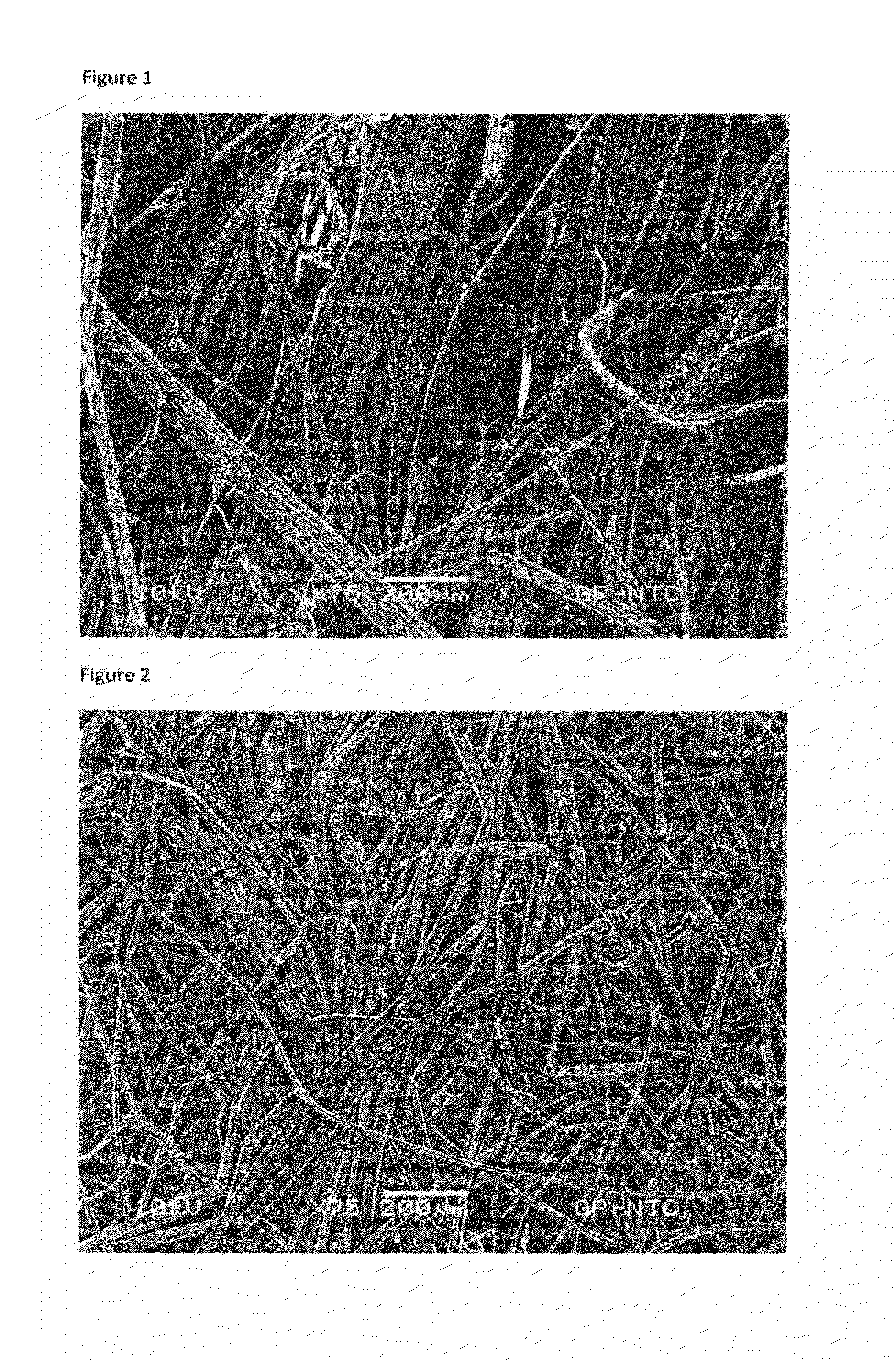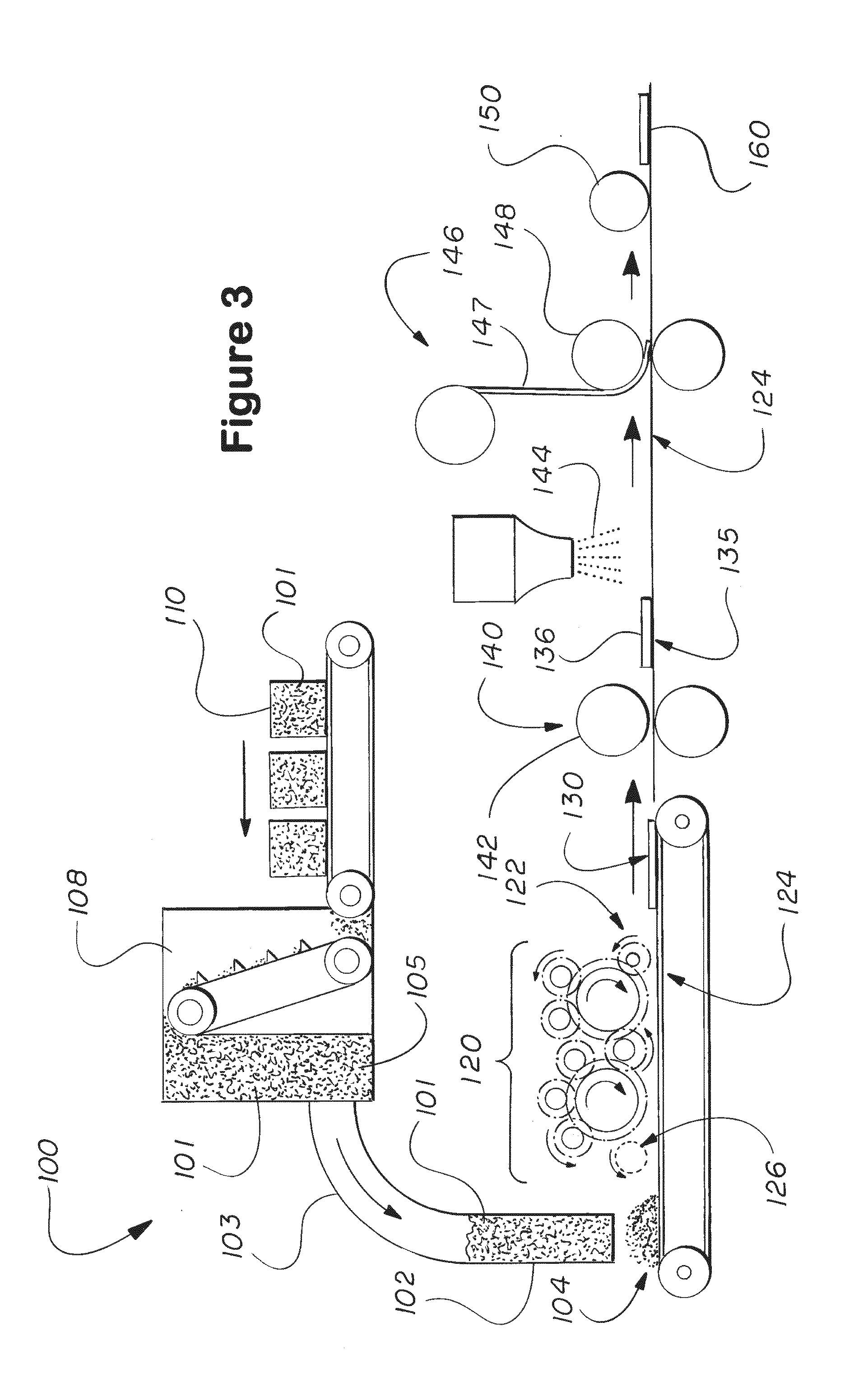Nonwoven Fabrics Comprised of Individualized Bast Fibers
a technology of nonwoven fabrics and bast fibers, which is applied in the direction of gravity filters, cartridge filters, loose filtering materials, etc., can solve the problems of limited use of cotton in modern nonwoven textile production, yarns and threads are not suited to nonwoven fabrics, and the non-availability of dry formed non-woven webs containing individualized bast fibers
- Summary
- Abstract
- Description
- Claims
- Application Information
AI Technical Summary
Benefits of technology
Problems solved by technology
Method used
Image
Examples
Embodiment Construction
[0026]A nonwoven fabric formed of a majority of individualized fibers which are substantially straight, plant-based, and substantially pectin-free and have a mean length greater than 6 mm is described. In another aspect, the nonwoven fabric comprises a majority of fibers which are non-cotton, plant-based, and substantially pectin-free and have a mean length greater than 10 mm. Yet, in another aspect, the nonwoven fabric comprises a majority of individualized fibers which are substantially straight, plant-based, and have a mean length greater than 10 mm.
[0027]As used herein, the term “plant-based fiber” means a fiber produced by and extracted from a plant as opposed to man-made fibers formed from cellulose. As used herein, the term “nonwoven” means a web or fabric having a structure of individual fibers or threads which are randomly interlaid, but not in an identifiable manner as in the case of a knitted or woven fabric. Examples of suitable nonwoven fabrics or webs include, but are ...
PUM
| Property | Measurement | Unit |
|---|---|---|
| Length | aaaaa | aaaaa |
| Length | aaaaa | aaaaa |
| Length | aaaaa | aaaaa |
Abstract
Description
Claims
Application Information
 Login to View More
Login to View More - R&D
- Intellectual Property
- Life Sciences
- Materials
- Tech Scout
- Unparalleled Data Quality
- Higher Quality Content
- 60% Fewer Hallucinations
Browse by: Latest US Patents, China's latest patents, Technical Efficacy Thesaurus, Application Domain, Technology Topic, Popular Technical Reports.
© 2025 PatSnap. All rights reserved.Legal|Privacy policy|Modern Slavery Act Transparency Statement|Sitemap|About US| Contact US: help@patsnap.com



